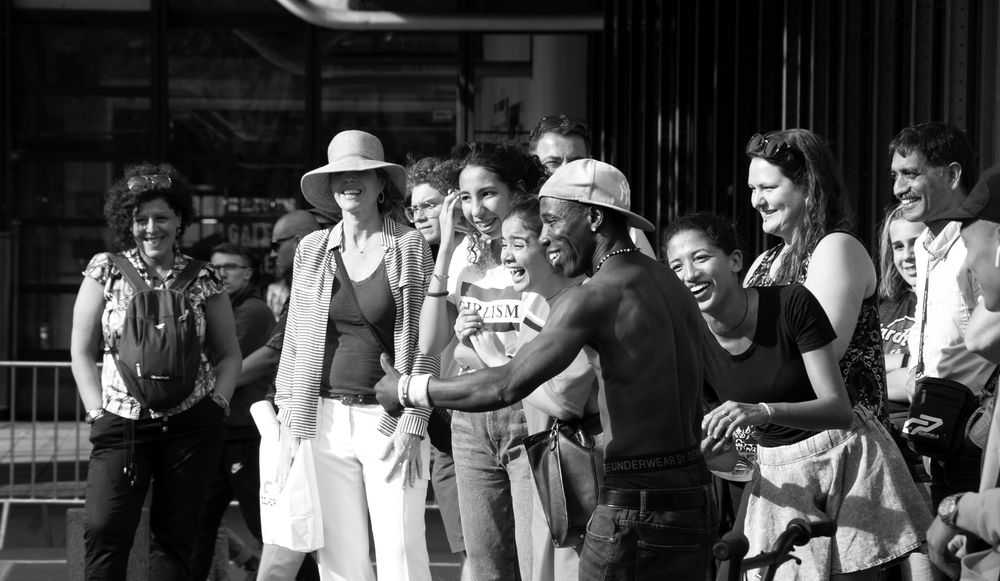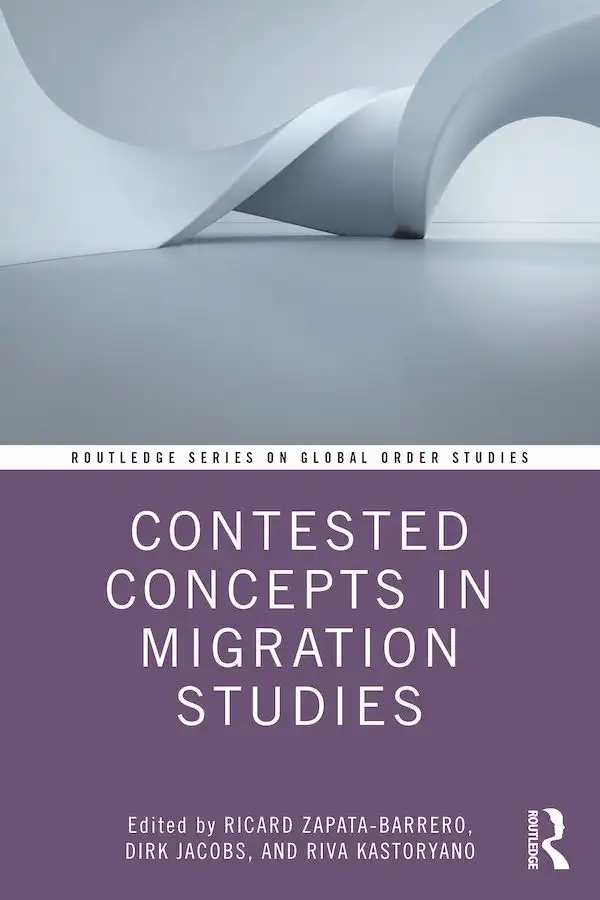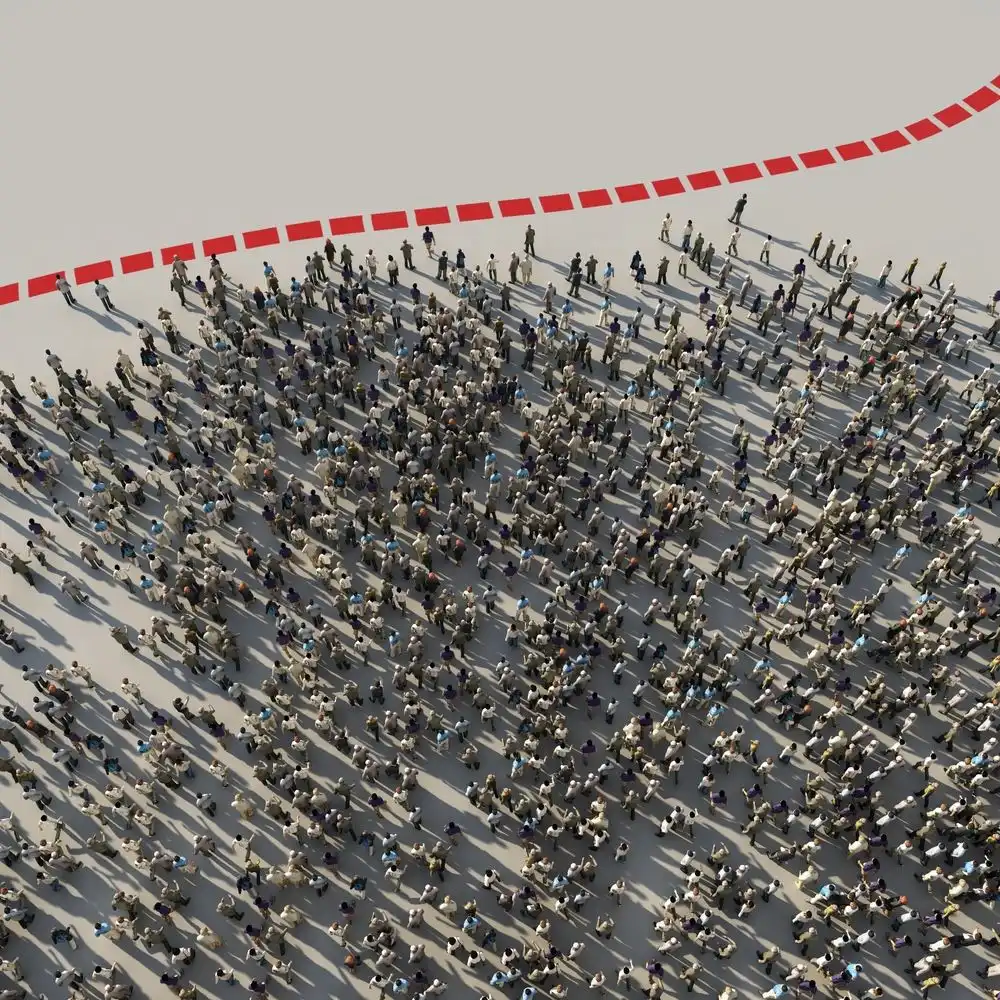Home>Conceptual Thinking on Migration Studies

16.05.2022
Conceptual Thinking on Migration Studies
Interview with Riva Kastoryano, Ricard Zapata-Barrero and Dirk Jacobs
Riva Kastoryano, Ricard Zapata-Barrero, and Dirk Jacobs have recently coedited a volume entitled Contested Concepts of Migration Studies (Routledge, 2022). As they claim in the introduction, “The main purpose of this volume is to enhance conceptual thinking on migration studies and clarify the political significance of the fading of old and the advent of new concepts”. They have agreed to answer our questions on the genesis of this collective project, on the notion of scientific concepts and their circulation, and on their own contributions to this volume.
What is the genesis of this collective volume?
Ricard Zapata-Barrero: This is a collective effort to articulate a collective concern about the key concepts that shape migration studies today and that have the distinction of fulfilling various overlapping functions, describing, explaining, and also normatively tracing how things should be. These hybrid and “contested concepts”, if not clarified, can become a source of misunderstanding and even conflict when they are operationalised. This volume began as a serious invitation to consider the importance of conceptual thinking in migration research and how this task should be done at the different scales and in the different areas where the same concept is applied, not only in the political, policy, and social sphere, but also in the media and everyday use of language, where terms can receive differentiated meanings and outline different problems. We are more than honoured to have attracted so many outstanding colleagues, who are today contributing to frame the agenda of migration research.
Riva Kastoryano: Ricard Zapata-Barrero and I had been exchanging thoughts on the concepts of interculturalism and transnationalism, on the fact that the two concepts overlap, and how they do so. Our debate turned into a confrontation between normative theory (interculturalism) and experiences. Our fruitful exchange inspired me to initiate the project PLURISPACE, a collaborative project where we discuss normative concepts in relation to integration and diversity and social reality as it is experienced in situations such as multiculturalism, interculturalism, and transnationalism. Interestingly enough, Ricard also had the idea of an edited volume on related concepts, obviously “contested”. The scope of the political issue of immigration is evident in the verbal war it produces. We therefore brought together our knowledge, energy, and concerns about concepts used in studies on migration.
Dirk Jacobs: While a few decades ago ethnic and migration studies were rather “marginal” topics in the social sciences and migration was already an important but not a main political topic, these days the situation is quite different. In most industrialised countries, the topics of migration and ethnic diversity have risen to the top of political debate and ethnic and migration studies have moved to the core of the social sciences. This evolution has highlighted even more that concepts mobilised in our fields do not exist in a vacuum, but get picked up (and in the process are often altered or criticised) in public debate, in politics, in the media, and sometimes even in everyday language. The movement also goes the other way around: our field of study is impacted by (sometimes heated) political and public debates and our conceptual thinking can be influenced by the political and societal contexts in which we work. All concepts have a history and often their significance and uses evolve. We felt it is important to have a critical reflection on this and to make more explicit what the impact on our use of core concepts is.
You write in the introduction, “one of the objectives of this edited book is to discuss the relation of scientific concepts to the concepts used (and abused) in political and social debates and everyday language, and how these realms interrelate”. Would you mind telling us more about this idea, from what sort of ideas do scientific concepts distinguish themselves and how do they circulate and potentially transform through this circulation?
RZB: This has been one of the drivers of this book. It is a claim (a conceptual engagement) on the need for a conceptual clarification in most migration-related debates. The fact is that most of the concepts that are used in migration studies are not technical concepts for just one particular use, but rather ideas that spread through a multi-dimensional space of uses. This often makes it difficult to communicate arguments and ideas on substantial migration-related issues. You will agree also that many of these concepts provoke emotions, and that these also interfere with a wide web of their meanings. As I myself say in other of my works, interested in deepening qualitative approaches, sometimes the conflicts that are generated in immigration issues are not about real facts but about their interpretations and meanings. This cognitive dimension of the concepts we use is key and is certainly part of the “conceptual thinking” we are claiming is necessary as a preliminary phase to any research, communication, or conversation about migration. This also involves, as we outline in our introduction, to domesticate our critical thinking in the concepts we use not only to argue but also to legitimise our narratives, policies, and practices related to migration.
RK: We all agree that words and concepts concerning immigration or the presence of immigrants have become controversial, loaded with feeling, sometimes spawning conflicts and sometimes contributing to them. Integration, diversity, communities, minority, ethnicity, are terms and concepts whose meanings shifts in time and space without ends in linguistic reflex in most studies on immigration and become a part of social conflict.
DJ: The concept of “integration” is a good example. While once only a sociological concept, with a century and a half of history in the social sciences, it has now not only become a very current word in media and political debates but is even used in everyday language. “Are migrants sufficiently integrated?” is a question that makes sense for most people, even in ordinary conversations. When you scratch the surface, you see that the same word can mean a number of things and sometimes these significances or uses are even contradictory. Sometimes one actually means “assimilation”—a concept which needs a definition too by the way—in other cases one thinks more of “inclusion”. We could now in fact start discussing how these other concepts we have just introduced are being used and what they mean or could mean. One of the contributions in our volume, written by Adrian Favell, actually criticises the implications of the use of the notion of integration and, among other things, discusses the “organic” use of integration, as if we are talking about cells in a body. Using this kind of metaphorical thinking has a number of implications that we as social researchers should reflect on.
In this edited volume, you explore fifteen core concepts and, necessarily, their related (sub)concepts. How did you select these concepts and why did you choose to organise this edited volume according to these?

RK: It was important to choose concepts that have been largely debated and/or that have created controversies, where theoretical approaches and normative vision and empirical studies were confronted and have not led to a consensus, such as “multiculturalism”. It was also important to choose concepts that travel over time and space, terms and concepts whose meanings shift without regard for “the marks of their ancestral memory”, as Michel Foucault put it, such as “cohesion”, “integration”, “diversity”, “identity”, “discrimination”, and “tolerance”. Besides, as Ricard put it, it was also important to take into consideration the sub-concepts to show the complexity of the use of concepts in the social sciences.
RZB: This has been one of the most difficult, but also exciting and fruitful discussions we have had, as editors first, but also with all the contributors. We realised that any concept we select is trapped in a web of other concepts (a conceptual system), and since concepts are interconnected, many arguments and ideas that underlie many debates began to emerge. In the end we opted, as often happens in complex situations, for commonsense and simplicity. We were also guided by the criteria of an idea’s topicality and cross-interest in the media, public opinion, and academia. What we can say is that although some substantial ones are still missing (perhaps to be addressed in a second volume), those that were selected are substantial, and that is what ultimately matters to us.
DJ: We thought these were the most useful ideas to critically reflect upon, but that’s obviously open to debate. In one of the first book reviews, published in the journal Ethnic and Racial Studies, which praised the edited volume for its informative and compelling nature, Erdem Dikici said we should have also included “anti-racism”, “Islamophobia”, and “solidarity”. We could have long discussions on that. For instance, I could counterargue that “solidarity” falls outside the scope of the book because it is more often used in other types of debates than in those on migration or in ethnic studies. It’s fine to discuss Islamophobia, but then we also need to take anti-Semitism on board. It's true that anti-racism is not discussed head on in the volume, but, in my opinion, it is indirectly covered in the chapter on discrimination. I am not saying colleague Dikici does not have a point here, I totally understand it and think it’s a very legitimate remark. However, there were pragmatic constraints and for this reason we also did not keep “intersectionality”, even though it was initially on my list of important concepts to cover… Choosing is losing.
Question to Riva Kastoryano: In your chapter, you explore the concept of transnationalism as part of the process of globalisation. Why did you choose this concept? Can transnationalism be defined as an autonomous and non-territorial nationalism?
RK: I have been exploring this concept for a long time from different perspectives. My first research was on the solidarity networks of migrant populations in Europe and community formation across borders. Transnationalism portrays the bonds of solidarity based on an identity—national, religious, linguistic, or regional—across national borders. The concept takes into account the context of globalisation and economic uncertainty that facilitates the construction of worldwide networks. It is in large part the result of the development of means of communication, the appearance of large regional groups, and the increased importance of supranational institutions which either originate there or facilitate such groups’ administration. Intensified by the magnitude of international migration, transnational networks not only favour cultural, social, political, or ideological transfer but also both guide the activities and generate their mobilisation.

Many questions with regard to membership, allegiances, and affiliations arise from these developments: what becomes of the relationship between citizenship and identity; between territory and the nation-state; between rights and identities, culture and politics, states and nations? A new transnational community that is imagined either out of a religion or an ethnicity, which encapsulates linguistic and national differences, seeks self-affirmation across national borders and without geographic limits, as a deterritorialised nation in search of an inclusive (and exclusive) centre around a constructed identity or experience—immigration, dispersion, minority. Increasing mobility and the development of communication technologies have intensified such transborder relations, leading to social and political mobilisations beyond boundaries. The rhetoric of mobilisation recentralises, in a non-territorial way, the multiplicity of identities—national, religious, ethnic, or linguistic—that are fragmented yet represented in such a structure. Together they point to the existence of a new type of nationalism that is transnational, that is a nationalism that is expressed and developed beyond and outside the borders of the state and its territory, and creates new expressions of belonging and a political engagement that reflects the nationalisation of communitarian sentiments guided by an “imagined geography”, leading to a non-territorial nationalism that I called transnational nationalism.
Question to Ricard Zapata-Barero and Dirk Jacobs: Your chapters explore the concepts of cohesion and diversity, respectively. Would you mind presenting us these two concepts and how they articulate with others?
RZB: I must confess that I took the concept of cohesion because it was one that continuously interfered in my research on diversity and interculturalism. It was a real need to clarify this important concept for myself. Of course, the main premise was the concern regarding how far cohesion is related to diversity in conflictive terms, and I worked according to the argument that we need to bridge cohesion and diversity since there is a false understanding that cohesion is only possible in “imagined” homogeneous societies. The chapter argues that nowadays there is an assumed view that diversity erodes cohesion and that we need to go beyond this “threatening hypothesis”. I immerse myself in the multistranded concept of cohesion and its relation to the liberal nationalistic tradition that tends to assume that cohesion is only possible in homogeneous societies. After digging into its conceptual agenda, I jump into the policy domain of cohesion, and particularly the three normative frames that share the effort of bridging cohesion and diversity: multiculturalism, civic nationalism, and interculturalism. At the end, I leave open the question of the benefits of considering cohesion and diversity as friends rather than foes.
DJ: The main point of my chapter on diversity is that it is not just a descriptive or technical concept which is being mobilised to capture the different possible forms of heterogeneity (as opposed to homogeneity). Let me first say that as a technical concept it’s tougher to deal with than you might initially think. Consider the following question: Is there more diversity when you have a lot of small ethnic minority groups (next to one dominant ethnic majority group) or when there are a few large groups with all of them being of the same size (including the sociological ethnic majority group)? The main message of my chapter is that, even when seemingly used in a “neutral” way, the notion of diversity always unavoidably has a political dimension. “What groups do you distinguish?” is a very power-laden question. It seems to be a very clear and easy concept, easily measurable, but it is not. Indeed, the significance of “diversity” changes with the context (and who has the power of definition).
In the two scenarios that I just gave as an example, the challenges and recipes for assuring social cohesion will most probably be quite different.
Interview by Miriam Périer, CERI.
Cover image caption: Street performance in Paris, 2018 (credits: Elena Dijour for Shutterstock Illustration)
Follow us
Contact us
Media Contact
Coralie Meyer
Phone : +33 (0)1 58 71 70 85
coralie.meyer@sciencespo.fr
Corinne Deloy
Phone : +33 (0)1 58 71 70 68
corinne.deloy@sciencespo.fr
